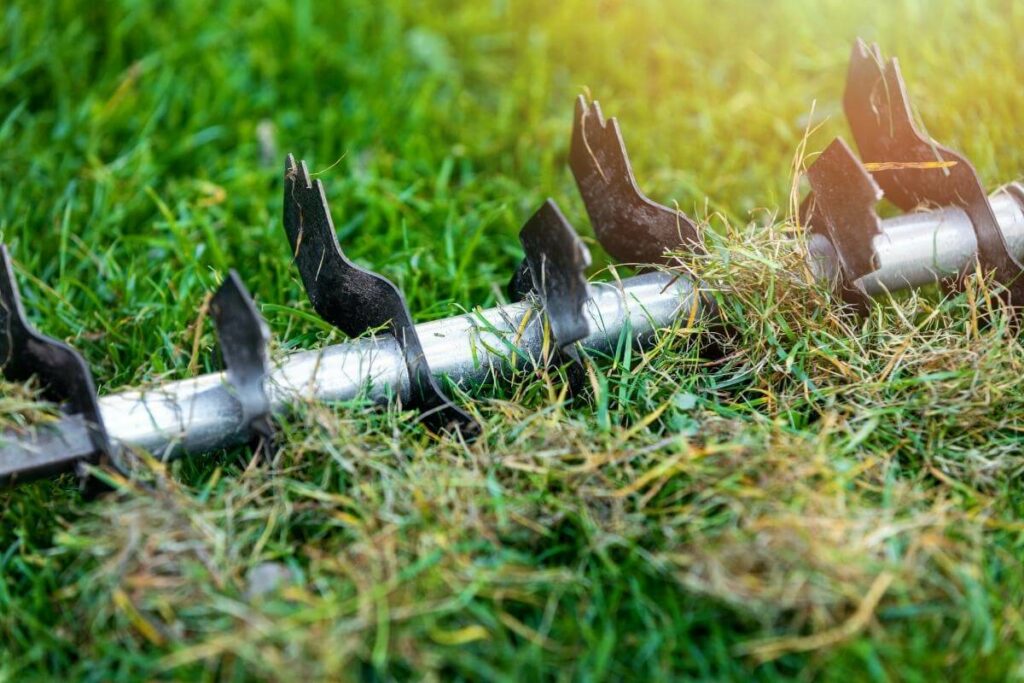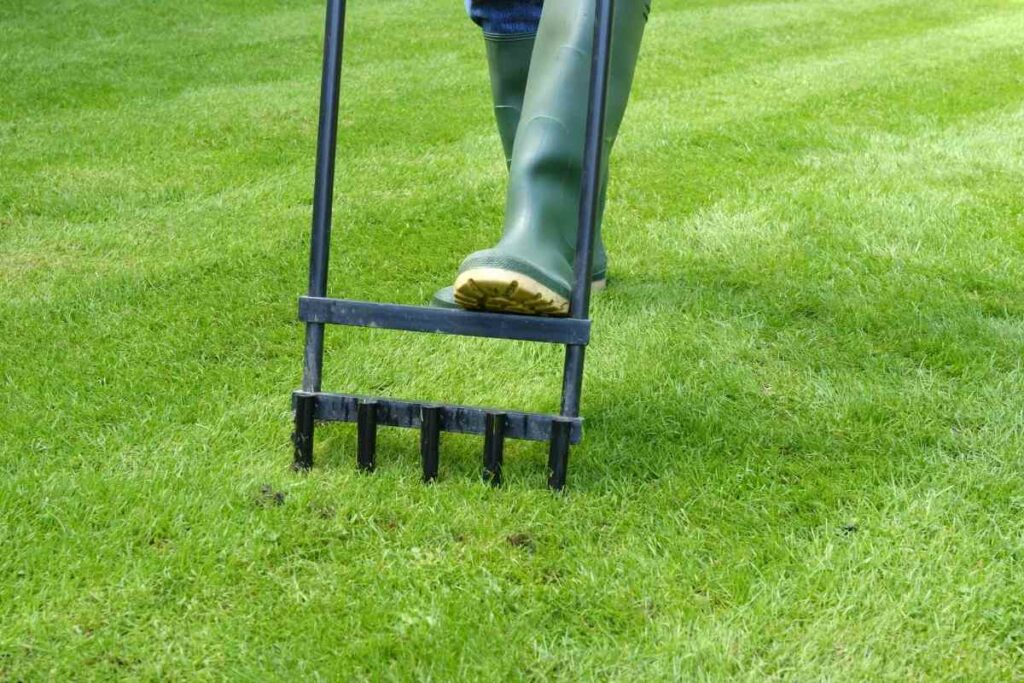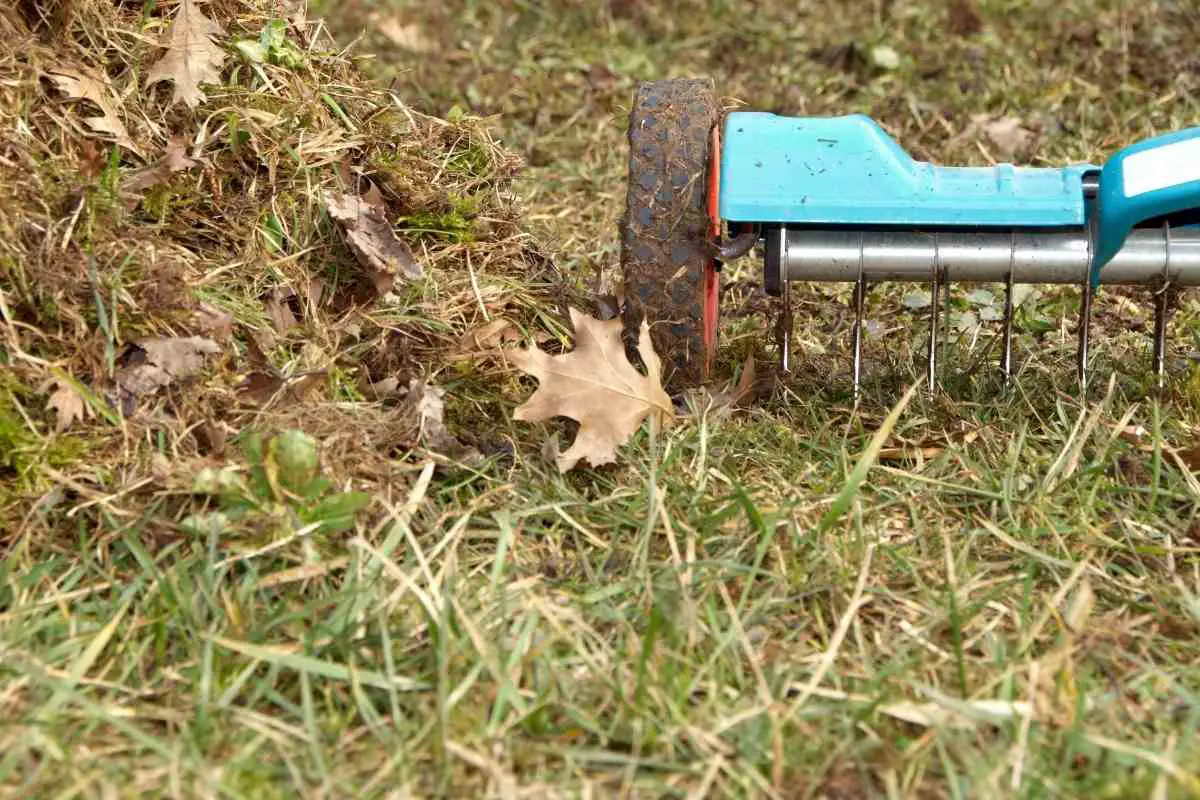Achieving a beautiful lawn requires proper management throughout the year.
Aerating the soil is among the essential practices homeowners engage in to achieve a healthy lawn.
Aerating your lawn regularly enhances drainage and improves air circulation in the soil. The process is vital since it increases the air and water available for the grass roots.
Aeration can be done in any of the seasons, even in winter.
Although the best time for aeration is when the soil is less dry, proper lawn maintenance throughout the year is crucial.
However, aerating your lawn in the mid-winter should be done carefully, probably by professionals, to ensure that the roots of your grass are not damaged.
Can You Aerate Lawn In Winter Cold?
There are a few procedures that homeowners need to perform in winter to ensure that come summer, your lawn looks excellent.
These tasks are aimed mainly at improving the health of the soil so that the roots can adequately intake valuable nutrients.

These procedures include weeding, fertilizing, and aeration, among others.
Essentially – Aerating the soil involves perforating the soil to create holes that facilitate the penetration of water, air, and nutrients to the root network of your lawn. Therefore, if the grass can intake these resources, it becomes healthy and can withstand the cold temperatures of winter.
Sometimes the lawn may get compacted, and the soil becomes hard during winter.
If the problem is not solved, it can pose long-term challenges regarding managing your lawn.
Therefore, any compacted areas on your lawn should be targeted and adequately aerated.
A garden fork can be used on small lawns to perforate the hard-padded soil.
Why You Should Aerate Your Lawn During Winter
Soil compaction is a significant problem that affects most lawns.
The roots cannot receive critical resources when the lawn becomes too dry, probably because of freezing or high user traffic.

If not managed, the grass can starve, leaving a dry lawn.
Therefore, even in winter, try to aerate those places that look compacted.
In Most Cases – A newly established lawn experiences soil layering. This layering is not favorable for developing roots in your lawn. It is essential to aerate the soil to reduce the layering and facilitate optimal drainage to the root network.
Also, the soil’s water retention capacity is greatly affected during winter. It is the reason your lawn becomes vulnerable to damage during this period.
Proper soil aeration enhances water penetration to the roots to ensure the grass remains healthy during the winter.
It is challenging to apply fertilizers on frozen, hard ground.
During winter, the grass may seem dead, but it is in a state of hibernation.
The roots are still feeding the grass plant, so it is crucial to ensure they have the right environment for mineral and water uptake.
Soil aeration will ensure that your lawn remains healthy throughout winter.
The Best Time To Aerate Your Lawn
It is not advisable to make changes to your lawn during winter.

Managing the lawn during mid-winter can damage the grass if not done appropriately. This is because the best time to work on your lawn is early fall and late spring.
However, the time aerating can be affected by several factors, including the type of grass and the region.
For cool-season grass types, the soil should be aerated in early spring. On the other hand, aerate the soil during early summer or late spring for warm-season grass types.
If practical, let your lawn rest undisturbed during frosty periods.
The grass may not recover since it is not actively growing.
Aerating your lawn and fertilizing the soil just before winter will help the grass remain healthy during the winter.
| Climate | Example of Grasses | Characteristics | Best Time To Aerate |
|---|---|---|---|
| Cool Season | Kentucky bluegrass Creeping bentgrass Ryegrass Tall fescue | Mostly found in the Northern States Thrive in approximately 65 degrees Fahrenheit | Early Spring |
| Transition Zones | Tall and fine fescues Bermuda grass | Cool or warm season grasses can survive well in the transition zone | Spring Through Summer |
| Warm season grasses | Zoysia grass Bermuda grass Centipede grass St. Augustine grass | Mostly found in lower Arizona and South Carolina Thrive well in approximately 90 degrees Fahrenheit Their lawns should not be aerated in the winter period | Early Summer Late Spring |
The Best Temperatures To Aerate Your Lawn
At around 42 degrees Fahrenheit and above, normal management operations may still be conducted even during winter.
The grass is still growing at these temperatures. However, do not be in a rush to mow or aerate your lawn if it is not necessary.
Low temperatures hinder grass growth, and in some cases, the plant hibernates. Therefore, the management tasks of your lawn are limited.

However, if there is a problem regarding weeds or soil compactness, conduct the management procedures carefully not to disturb the roots.
According to Studies – You should carry out aeration when the soil temperatures are between 50 and 65 degrees Fahrenheit.
These temperatures are conducive to root development. The grass can grow by an inch under these conditions.
Unless necessary, avoid aerating dormant lawns. Aeration should be done during fall and spring, especially for grasses that do well in cool seasons.
How Often Should You Aerate Your Lawn
As much as aerating your lawn is essential, over aerating it can be harmful to the grass.
Aeration disturbs the soil structure and layers and should not be done frequently.
For healthy lawns, once in two years is enough. However, if the soil is often compact due to the climate, you can aerate it annually.
The number of aerating times often depends on the thickness of the soil and the traffic.
Thin structured soils like sandy soil have better drainage capability than thicker ones like clay.
Thin soils hardly require regular aeration since the soil does not compact easily.
Conversely – Thick soils have drainage problems and require regular aeration to ensure the roots acquire the necessary nutrients. Importantly, if the soil looks healthy, there is no need to disturb its structure. Otherwise, aeration will cause more damage than good.
Final Thoughts
The soil aeration process can be pretty messy since it involves perforating the soil.
The process disturbs the soil structure and the grass roots on your lawn. Therefore, aeration should be conducted appropriately using collect tools and at the right time.
You can aerate your soil at any season of the year.
However, be careful when aerating your lawn mid-winter, especially if your region experiences temperatures below 42 degrees Fahrenheit. Aeration for southern regions should be done in spring.
Nonetheless, that does not mean you should not take care of your lawn during winter. Aeration facilitates the optimal intake of resources and thus should not be avoided.
